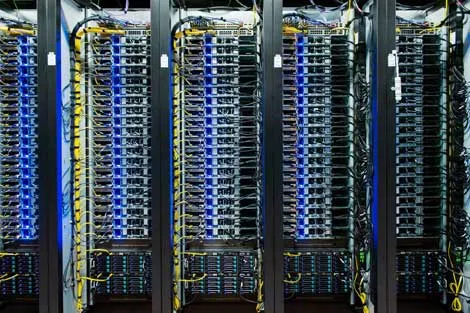
When the first camera phone came out most of us still had loose photos laying around, albums tucked away on shelves and maybe even slides in neat plastic containers; digital cameras had almost completely replaced traditional 35mm film cameras, but were still relatively large, cumbersome and expensive.
The camera phone dramatically increased the number of pictures most of us have because most of use carry a smartphone with us. Instagram is testament to the success of the camera phone and the willingness of millions of strangers to share moments of their lives. Private cloud providers are springing up all over the place - trying to capitalise on saving the worlds digital memories.
How many memories should we save? Do we really need copies of our emails from 20 years ago? Do we need 300 photos from the same event tucked away on a cloud storage service "just in case"? Is it our moral and ethical responsibility to reduce our online energy footprint even if other companies are "fitting the bill"?
Besides the obvious security risks there is a very real environmental cost to storing data. There is an estimated 350 million terrabytes being used for storage in the United States - the energy consumption from data centers in the US alone is 70 billion Kwh[1].
The production of the technology that hosts these files produce toxic waste and usually contain products derived from oil in addition to consuming electricity. Even if we produced all of our energy by solar we would be partially reliant on oil for Naptha to make conduit - or polyester and other petrol products used in many panels. It takes 2 years for a panel to produce as much electricity as it took to make it and the production power of the panel begins to slowly degrade until they are ultimately replaced after about 20 years. It is cheaper and easier to use less energy than it is to create more of it - conservation is one of the biggest problems of the 21st century.
The USB drive seems to be the greenest solution for those who want to make long term backups of their files[2]. USB Drives are front end loaded in their energy use - after they are created they use very little energy - they are typically not powered for long periods of time and have an extremely long lifespan (how long they will sit in a landfill is another story). Every USB Drive has different components - there is no agreed upon "energy cost" to manufacture them. The best rule of thumb when buying USB storage to minimise your carbon footprint is to buy small in physical size, buy a bigger storage capacity than you think you need and if you can choose the material the case is made of - opt for bamboo instead of plastic - plastic is typically made of oil derivatives or natural gas so avoiding it at any cost is advised. Once your files are on your USB drive and its hidden away somewhere - you can rest assured that it is not consuming any electricity or causing any additional harm to the environment.
[1]https://www.forbes.com/sites/christopherhelman/2016/06/28/how-much-electricity-does-it-take-to-run-the-internet/#36c8c4121fff
[2]https://thisblogdoesnthaveanameyet.wordpress.com/2011/12/23/is-a-usb-flash-drive-green/